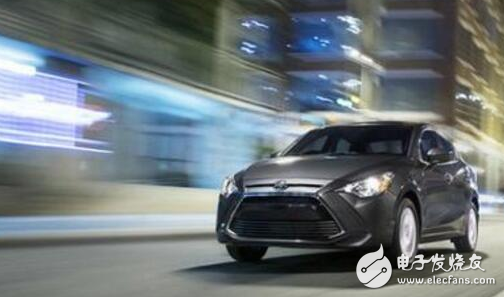As traditional fuel vehicles face a gradual phase-out, the push to eliminate them is becoming increasingly tangible. Many car manufacturers are now exploring ways to transition toward new energy vehicles, with pure electric vehicles (EVs) being one of the most prominent options. However, despite their growing popularity, EVs still face challenges in achieving full mainstream adoption. According to Japanese media, there are three key factors that determine whether EVs will become widely accepted.
Beyond France and the UK, countries like China and India are also accelerating their shift from gasoline and diesel vehicles to electric ones. Although some critics argue that these policies are just symbolic or lack clear implementation strategies, the global trend toward electrification is undeniable. While Japan is slightly behind in this transition, it is actively working on promoting the next generation of vehicles. This article explores the three main factors influencing the widespread adoption of pure electric vehicles.

**Government Incentives**
According to the International Energy Agency (IEA), global hybrid electric vehicle sales rose by 38% in 2016, reaching 750,000 units. China led the way with 340,000 units, followed by the US and Norway. Though still less than 1% of total car sales, the shift toward electric vehicles is gaining momentum. Norway, for example, aims to ban gasoline and diesel cars by 2025—earlier than both France and the UK. With 29% of its new car sales being electric or plug-in hybrids, Norway leads Europe in EV adoption, largely due to strong incentives.
In Norway, EV buyers enjoy tax exemptions, free highway access, and priority lanes. Additionally, a new tax was introduced on large EVs to encourage more people to opt for smaller, affordable models. In contrast, Japan offers only a limited subsidy of up to 400,000 yen (around RMB 23,330) at the time of purchase. Even with this support, the cost of a new EV remains high—around 2.5 million yen (RMB 148,820). If the subsidy were increased to 1 million yen (RMB 58,328), the price could drop to about 2 million yen (RMB 1,166,656), potentially increasing consumer interest.
**Environmental Regulations**
The second factor driving EV adoption is strict environmental regulations. By 2020, Japan’s fuel efficiency target was set at 20.3 kilometers per liter, which is lower than the EU's 24.4 km/l in 2021. China, on the other hand, is pushing for nationwide EV adoption by 2020. The number of parts in an EV is significantly fewer than in a traditional vehicle, making the entry barrier lower. This gives China, which has historically lagged behind Japan and the West, a chance to overtake in the EV market.
However, many Japanese automakers have not yet adjusted their targets, even though they are already producing EVs. A government official stated that a major structural reform would be needed if EVs were to fully replace internal combustion engines. Experts suggest that Japan should focus on leading in the EV sector while balancing industry needs.
**Sales Regulations**
The third factor is the implementation of sales regulations. In China, since 2019, automakers must produce and sell 10% new energy vehicles, including EVs and plug-in hybrids. California also shifted its focus to pure electric vehicles in 2018, excluding hybrids from the definition of "new energy."
In Japan, many companies remain cautious about such regulations, fearing potential financial losses. However, in the long run, these rules may drive innovation and improve competitiveness.
**Environmental Impact Depends on Power Sources**
One of the main reasons EVs are considered eco-friendly is that they don’t use gasoline or diesel, resulting in lower carbon emissions. However, the environmental impact of EVs depends heavily on how the electricity is generated.
In Japan, the Ministry of Economy, Trade and Industry estimates that China’s EVs emit 82 grams of CO₂ per kilometer, largely due to coal-dependent power generation. This makes them less environmentally friendly than hybrid vehicles, which emit 69 grams. China plans to reduce coal reliance to 51% by 2030, which could bring emissions down to 62 grams.
Japan itself generates 32% of its electricity from coal, giving EVs a carbon footprint of 59 grams. Germany emits 49 grams, while France, with 75% nuclear power, emits just 5 grams. As such, the success of EVs depends not only on the vehicles themselves but also on the energy mix used to power them.
To truly promote sustainability, governments must consider the entire energy policy. Professor Endo Tetsu from Keio University emphasized that low-cost, low-emission nuclear power could play a significant role in supporting the future of electric mobility.
Bead
Anyang Kayo Amorphous Technology Co.,Ltd is located on the ancient city-Anyang. It was founded in 2011 that specializes in producing the magnetic ring of amorphous nanocrystalline and pays attention to scientific research highly,matches manufacture correspondingly and sets the design,development,production and sale in a body.Our major product is the magnetic ring of amorphous nanocrystalline and current transformer which is applied to the communication, home appliances,electric power,automobile and new energy extensively.We are highly praised by our customers for our good quality,high efficiency,excellent scheme,low cost and perfect sale service.
Low Loss Magnetic Ring,Versatile Magnetic Core,High Property Iron Core,High Saturation Iron Core
Anyang Kayo Amorphous Technology Co.,Ltd. , https://www.kayoamotech.com
